Work area guide
The Mashup editor interface that you will find in the work area is composed of the following elements:
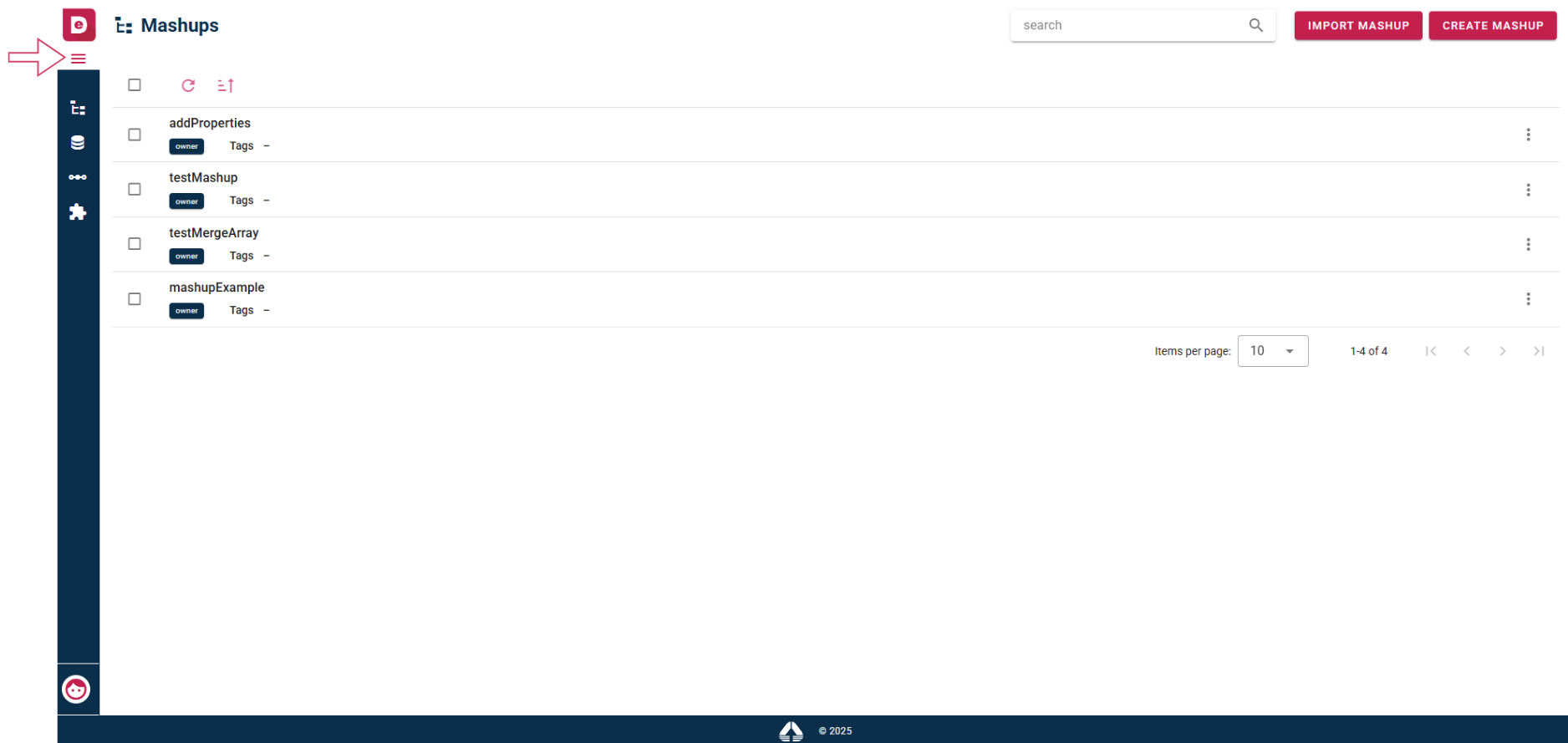
The main page you'll see after logging in is the one showing the list of mashups created or shared with the user. On the left there's an expandable sidebar that can be opened by clicking on the symbol below the DE logo indicated by the arrow. By expanding it, you can get a complete overview of all the DME functionalities. The side bar is composed of the following elements:
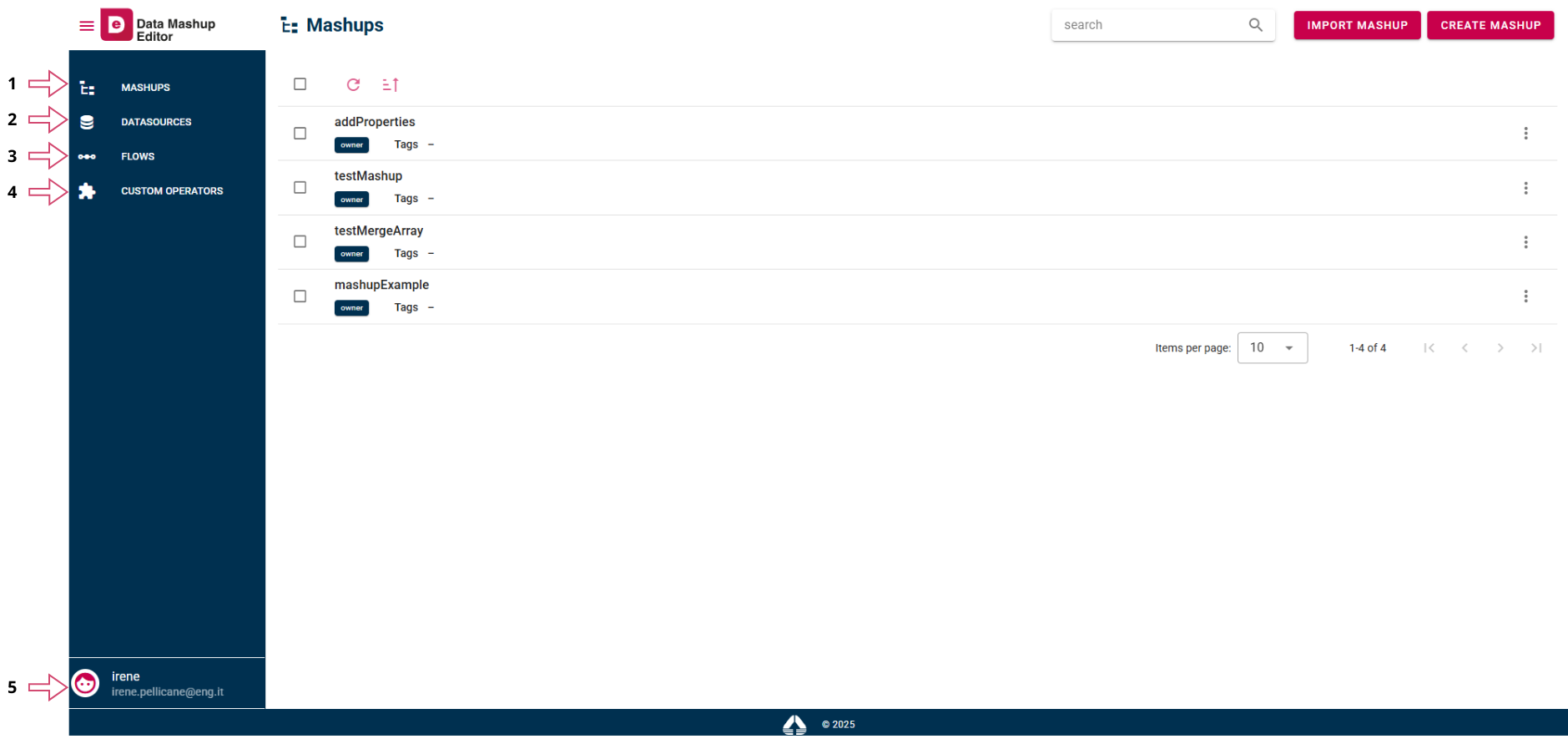
Mashups: the list of all the mashups available in the work area. You can create a new mashup by clicking on the "CREATE MASHUP" button on the top right of the list or import it with the "IMPORT MASHUP" button. You can also search for a specific mashup by typing its name in the search bar on the top of the list.
Datasources: the list of all the datasources available in the work area. You can create a new datasource by clicking on the "CREATE DATASOURCE" button on the top right of the list or import it with the "IMPORT DATASOURCE" button. You can also search for a specific datasource by typing its name in the search bar on the top of the list.
Flows: the list of all the flows available in the work area. You can create a new flow by clicking on the "CREATE FLOW" button on the top right of the list or import it with the "IMPORT FLOW" button. You can also search for a specific flow by typing its name in the search bar on the top of the list.
Custom operators: the list of all the custom operators available for the user. You can create a new custom operator by clicking on the "CREATE OPERATOR" button on the top right of the list. You can also search for a specific custom operator by typing its name in the search bar on the top of the list.
Account and settings
For the mashups, datasources and flows you can click on the three dots on the right of the name to open a menu with the following options:
Share: to share the element with the user in the same organizations, selecting some restriction on the operation to perform:
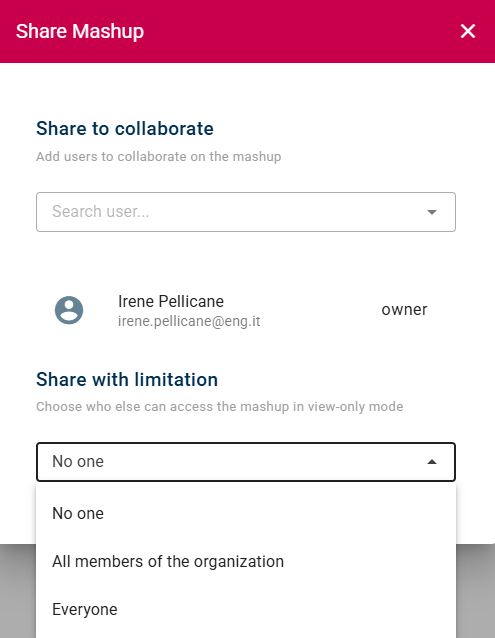
You can share the element via username and let them be able to edit the element. At the bottom of the menu you can find the label "Share with limitation". This option can be used, for example, to let visible your mashup for all the member of your organization.
Export: to export the element in json format and to share with alternative methods (e.g. email) and let the other users import with the functionality "IMPORT MASHUP/DATASOURCE/FLOW"
Duplicate: to duplicate the element creating a copy that in the case of mashups can be renamed while in the case of flows and datasources it is renamed by the system incrementally.
Delete: to delete one or many selected element.
Mashup work area guide
The Mashup editor interface that you will find in the work area is composed of the following elements:
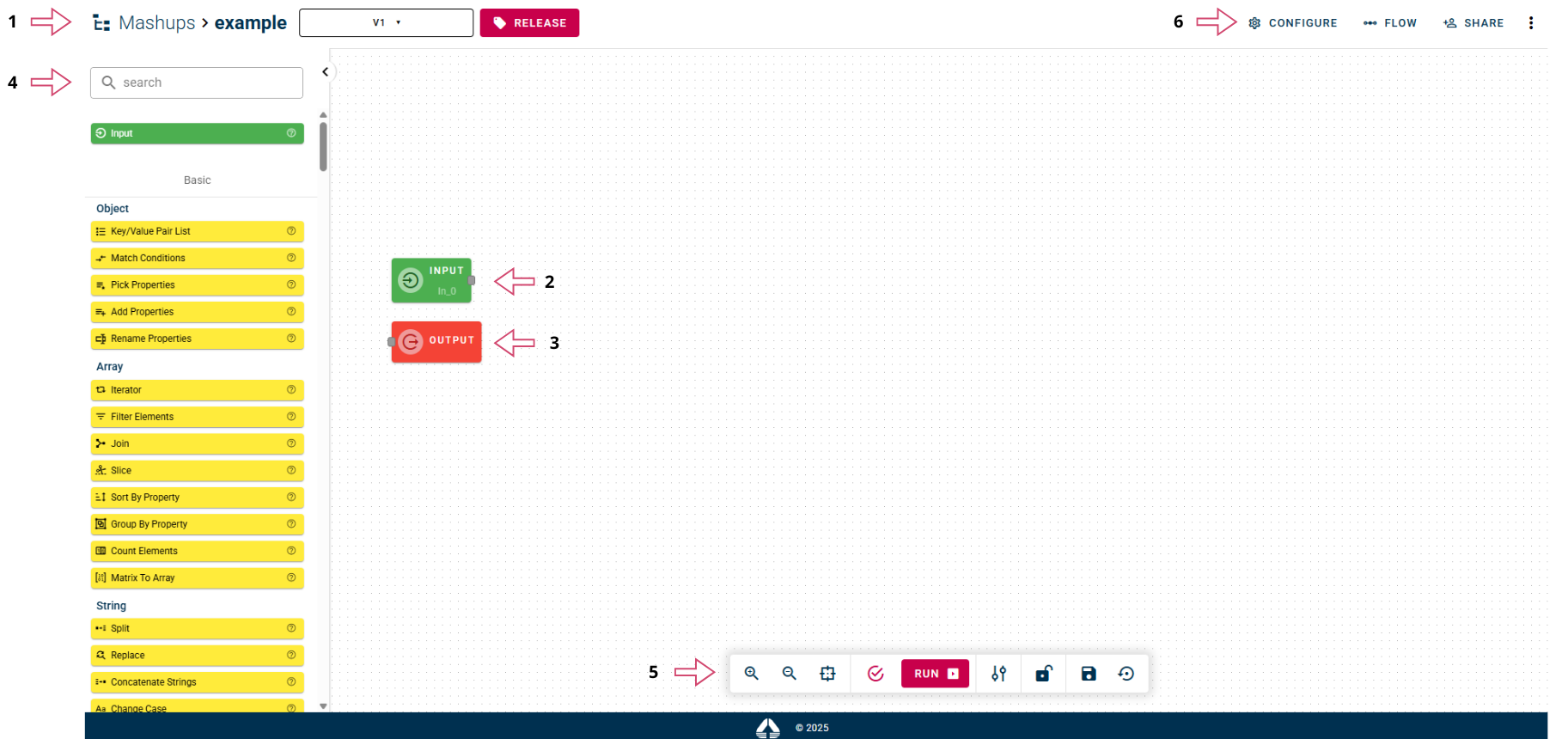
- Header
- Input node
- Output node
- Operators palette
- Toolbar
- Generic configuration options:
- Configure: rename, tags, choose the Smart Data Model producted by this mashup
- Flow: to open the flow list where the mashup is used
- Share
- Duplicate
- Delete
- Export
To know how to use the mashup editor's operator we suggest to read the Mashup editor guide.
Header
In the header, you'll find the mashup title and the release button. A mashup must be released before it can be used within a flow.
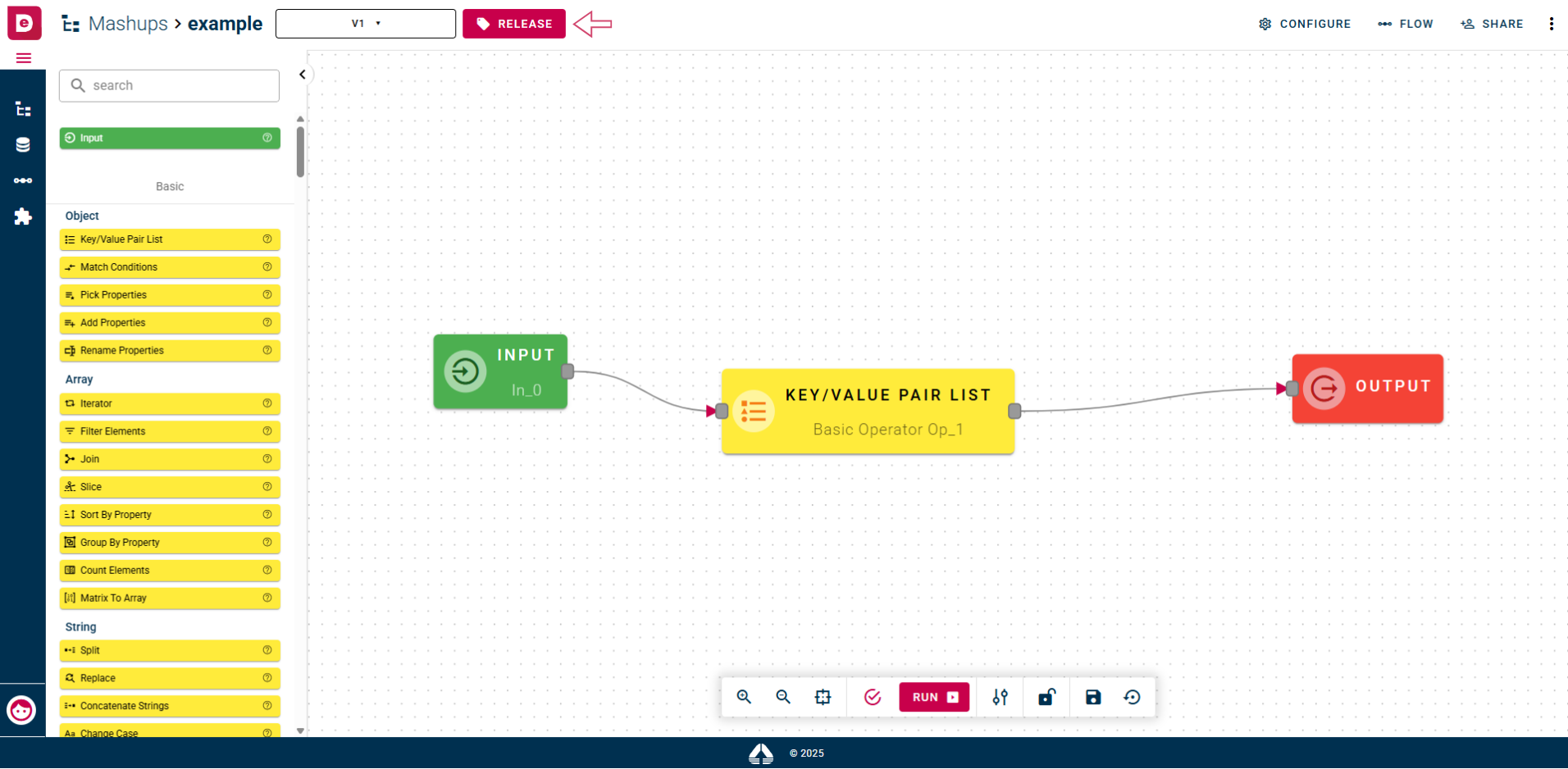 Once released, it becomes immutable and can no longer be modified.
However, you can create a new version to make changes.
To do this, click on the release button and then select 'Create Version'.
Once released, it becomes immutable and can no longer be modified.
However, you can create a new version to make changes.
To do this, click on the release button and then select 'Create Version'.
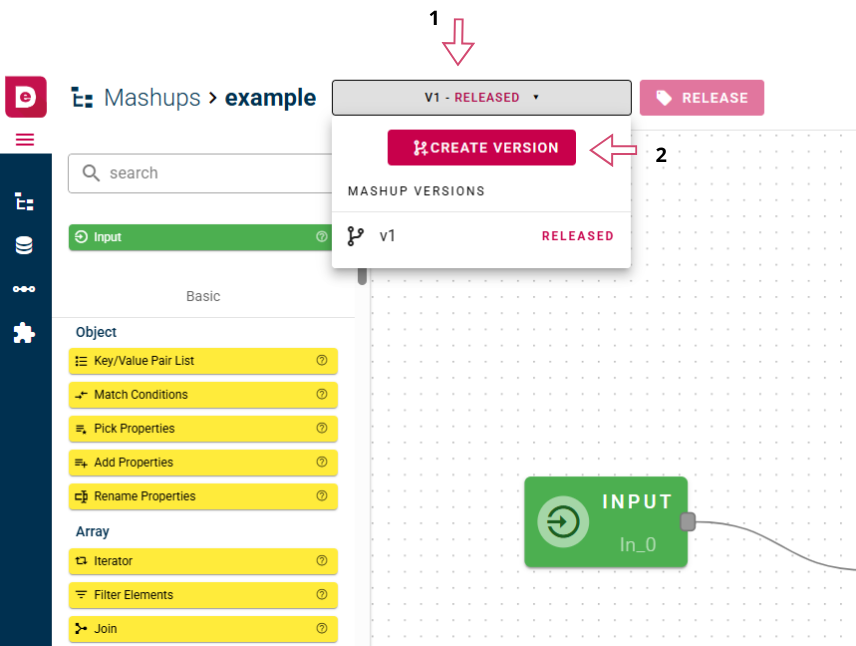
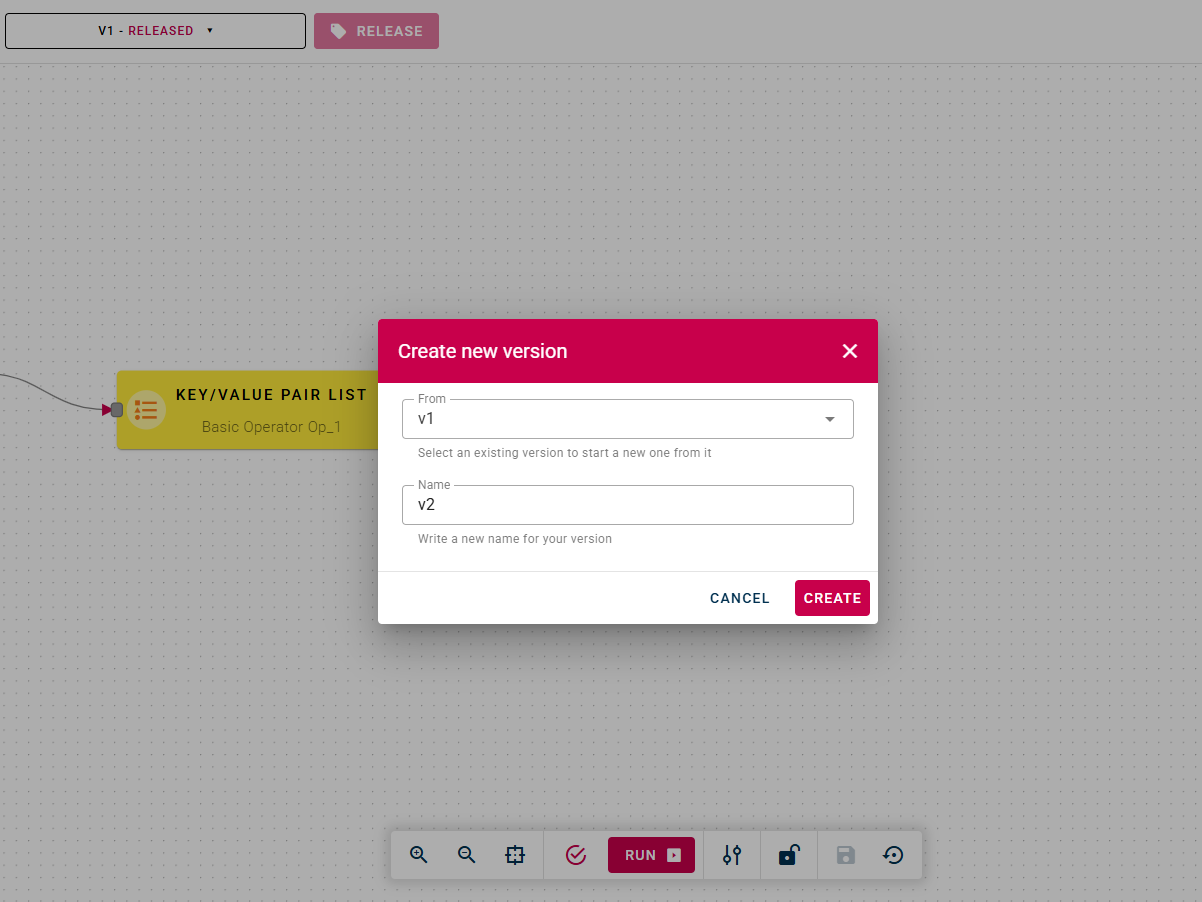
Then you can choose which version the new mashup is based and assign it a new name. This will create a new mashup based on the selected version, which will be fully editable and can subsequently be released.
Operator's toolbar
Each operator has a toolbar with the following elements:
- Preview: to preview the result of the operator
- Help: to open the help page of the operator
- Delete: to delete the operator
- Cache: to enable/disable the cache for the operator
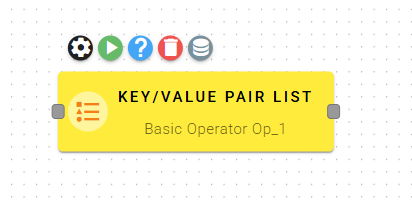
Cache System
The cache is generated based on the input/operator pair. This system associates the input with the operator as a single pair, allowing multiple values to be stored simultaneously. The main objective is to speed up the execution of a Mashup.
A clear example of this mechanism is the use of a token with a predetermined expiration. It's possible to define the token's validity period by entering the required time for its expiration into the "lease time".
The settings for the cache system are:
- Status: to choose if enable or not the cache system
- Lease time: Amount of time(ms) for which the value should remain cached.
Input and output node
Input and output nodes are those that allow connecting the mashup with the external world. Input nodes allow defining the types of incoming data while the output node is where the workflow execution result flows into, which will therefore be returned to the outside.
Input node settings
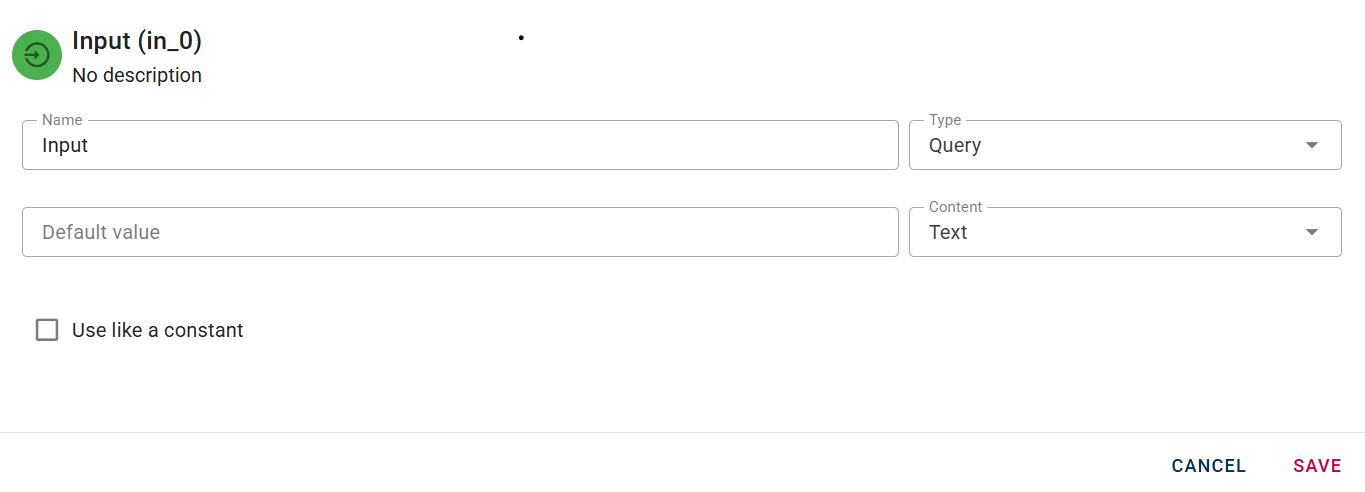
- Name: the name of the input node
- Type: the type of parameter through which the data will be received:
- Query, the parameter must be sent as a query param.
- Header, the parameter must be sent as a value in the header.
- Body, the parameter must be sent within the body.
- Content:
- JSON: to set the input node content as a JSON.
- Text: to set the input node content as a text.
- Date: to set the input node content as the current date.
- Default value: the default value of the input node. This value wil be used to perform the preview of the mashup. Inside the flow this parameter will be replaced with the one sent from outside.
If the Use like a constant parameter is marked the flow will not accept external parameters but will use the one defined in this modal to execute the mashup.
Toolbar
The toolbar is composed of the following elements:

Zoom in: to zoom in the mashup
Zoom out: to zoom out the mashup
Fit mashup: re-center the editor to have the mashup in the center
Validate mashup: validates the mashup, showing any validation errors.
Run:to run the mashup. The result can be seen in two different options:
- Tree view: to preview the result of the mashup in a tree structure.
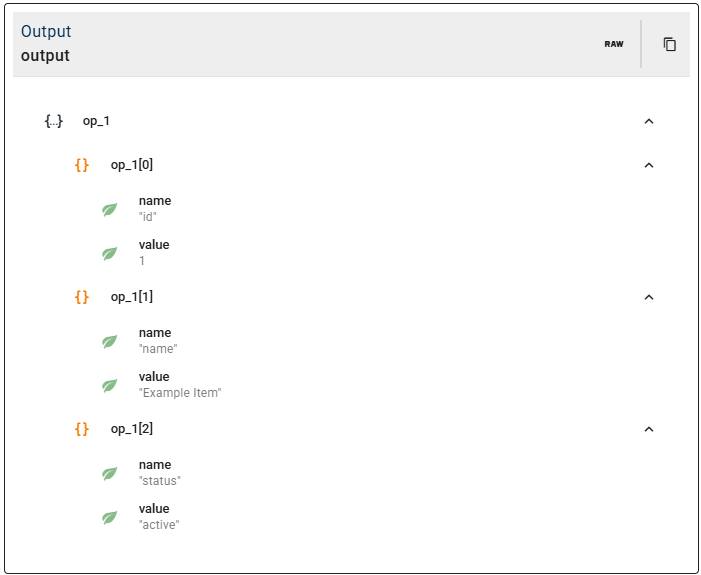
- Raw view: to preview the result of the mashup in a raw view.
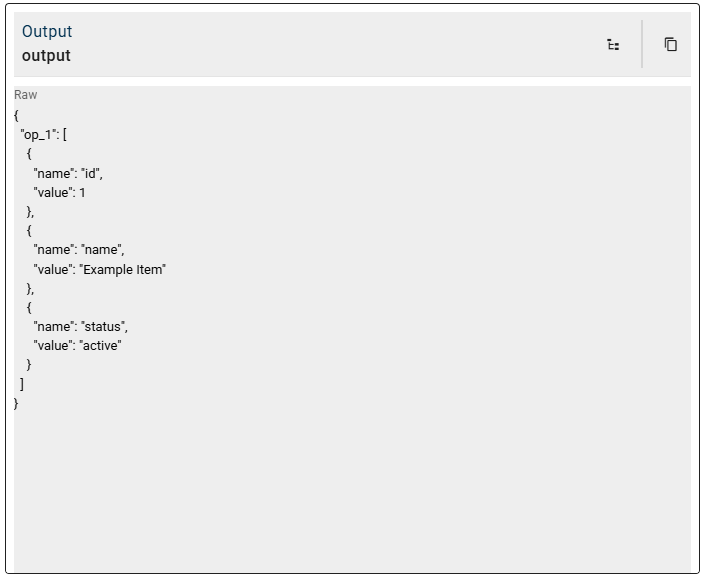
- Tree view: to preview the result of the mashup in a tree structure.
Settings: editor's settings.
Lock nodes: to block the nodes in the current position.
Save: to save the mashup.
Restore: to restore the mashup to the last save.